11th March 2011, the coastal area of Iwate, Miyagi and Fukushima suffered great loss from a major tsunami caused by the Great Tohoku Earthquake. 10 years have passed since then. The townsfolk in post disaster areas have been working hard on various restoration projects to revitalize their town, while striving against the hardships and grief brought by the disaster for the past 10 years. In this article, we would like to introduce people working their best to revitalize post disaster areas.
Connecting the past and future

Motoda Kumiko, our guide for Disaster Prevention Tour in Taro, shared with us about the survival story of local residents, the struggles and pain in rebuilding their hometown, and her love towards the town that raised her.

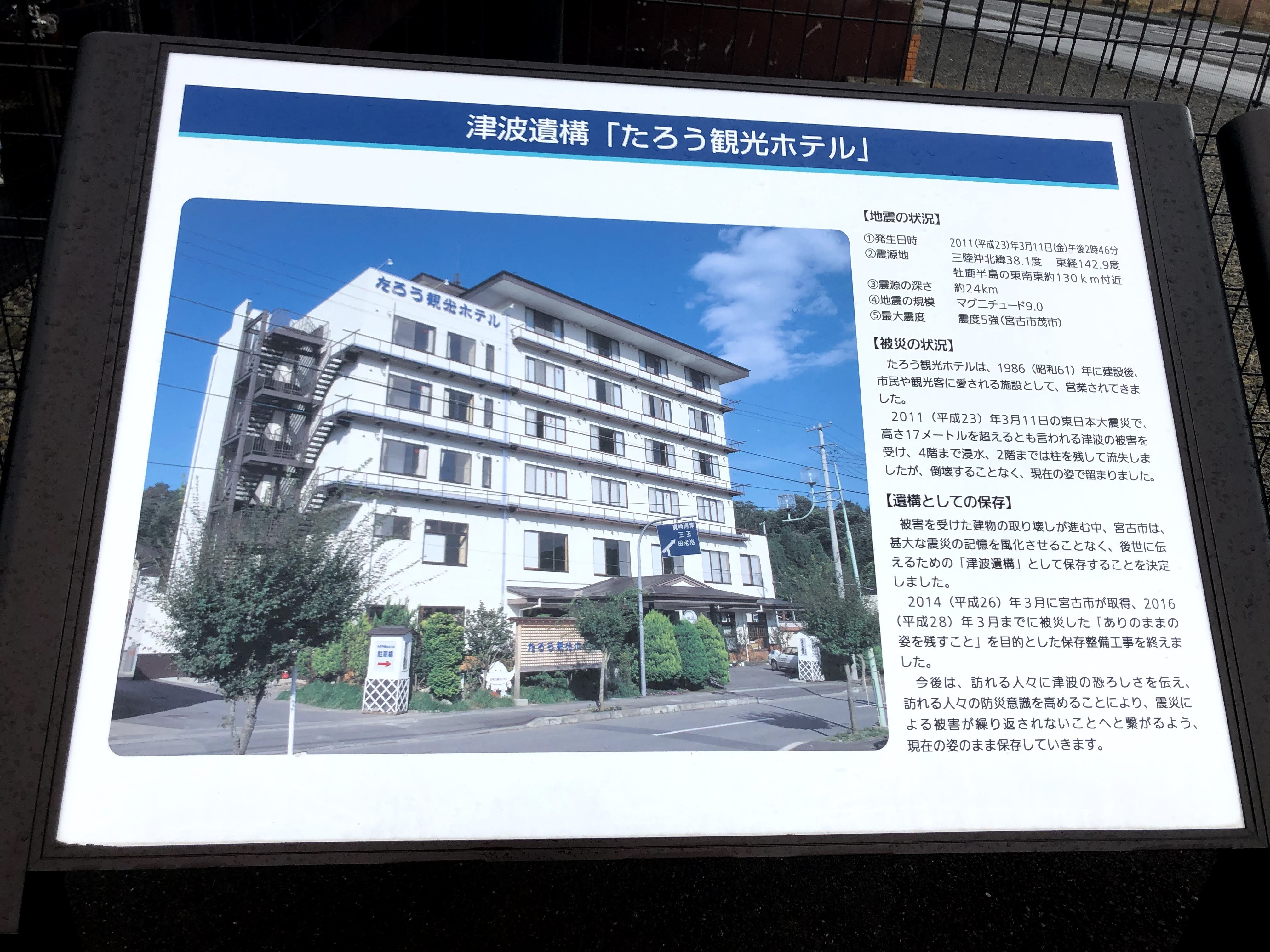
When the second wave of tsunami approached ferociously towards the second seawall of Taro area in Miyako city of Iwate prefecture, it only took about 10 seconds from the destruction of the seawall to the demolition of the whole housing area. All buildings were wiped out mercilessly except Taro Kanko Hotel. The tsunami destroyed the 4 lower floors of the hotel sparing not a single wall, while the 5th and 6th floors were pretty much intact so we could see what the interior looked like before the tsunami. The moment where the tsunami approaches the village was recorded by the hotel’s owner, at the exact room where we were shown the footage. All the audiences were taken aback by the destructive power of the tsunami. After showing us the footage, Ms. Motoda mentioned “Disaster happens when people forget. Not saying that disaster comes at a time when people forget about it, but when people forget and let their guards down, disasters happen.” The hotel is now an earthquake heritage site, with the state of destruction being preserved to remind people of the disaster and the importance of disaster mitigation.

While she tried to explain as calmly as possible during the whole tour, a sense of sorrow can clearly be felt in her voice. The sadness when she thinks about victims whose bodies were never found, the regret of being unable to save her relatives whom she lost in the disaster; these memories live on within her after 10 years. However, despite the sorrowful memories, she chose to stay by the sea that she grew up with, continue passing down her experience to younger generations and hope that the tour can raise awareness on disaster mitigation among people including those from outside the town. Ms. Motoda hopes that her painful experience can be turned into something that would help build a brighter future.
Lastly, she hopes that her sentiment towards disaster prevention can reach other countries as well. “I hope that people can think about disasters by putting themselves in the position of disaster victims, realising that such an event is not exclusive to people in Taro. It can happen to anyone and understand the importance of disaster prevention education,” said Motoda when asked what kind of message she would like to share to Malaysians and the international community.
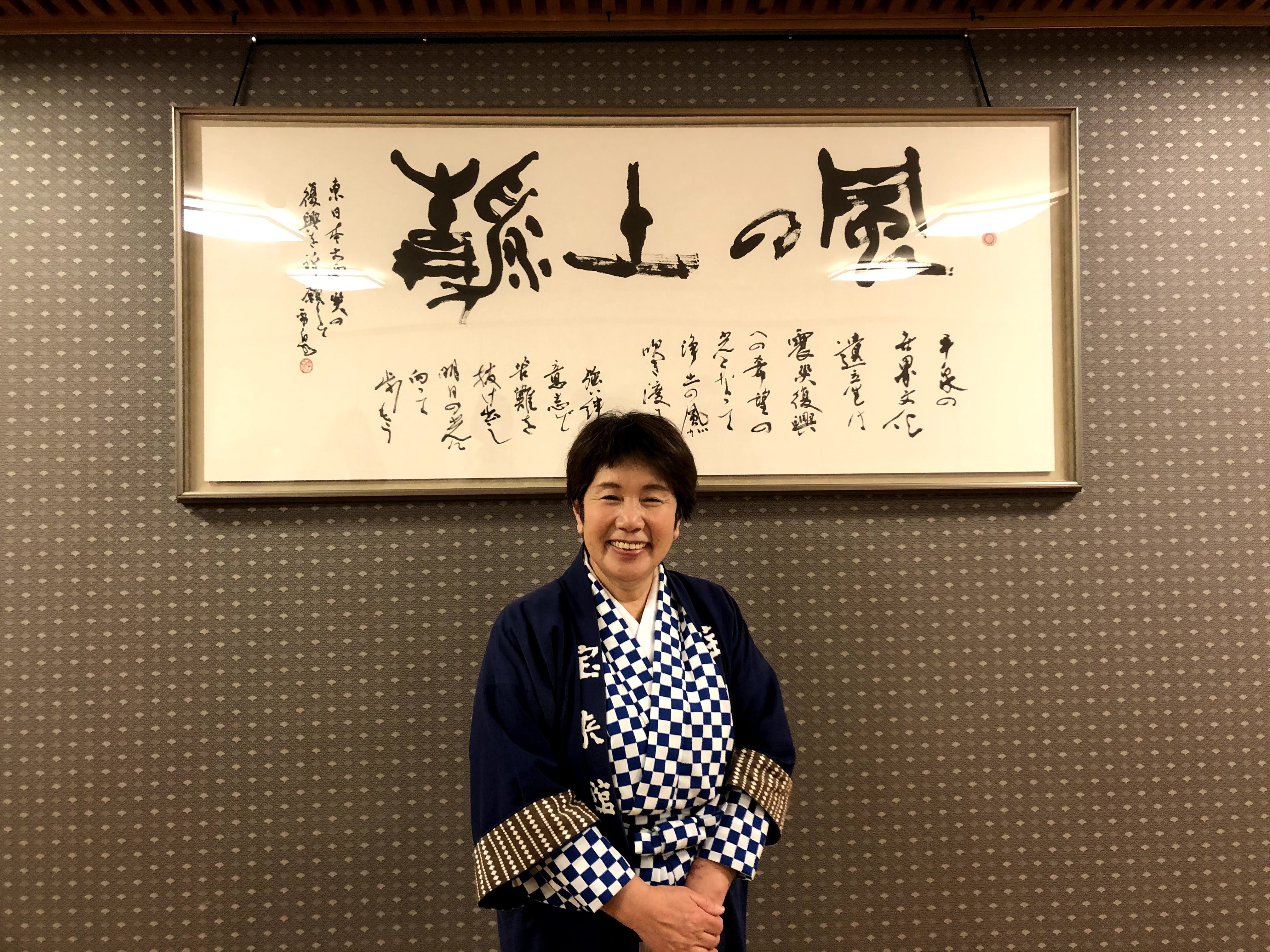
In the evening, we were greeted warmly by the owner of the ryokan Horaikan in Kamaishi City, Ms. Iwasaki Akiko. With her powerful and charming voice, she told us the story of how she and the ryokan (Japanese style hotel) survived the disaster 10 years ago. During the disaster, she felt the importance of connections within the village community and international cooperation. She is very grateful for support from the international community, including from Malaysia! According to her, a group of Malaysians came to the place years before the disaster happened. When they learned about what happened in that area, they flew all the way there to help even though it was very difficult to travel over there at that time. Such sincere effort really meant a lot to her and the villagers.
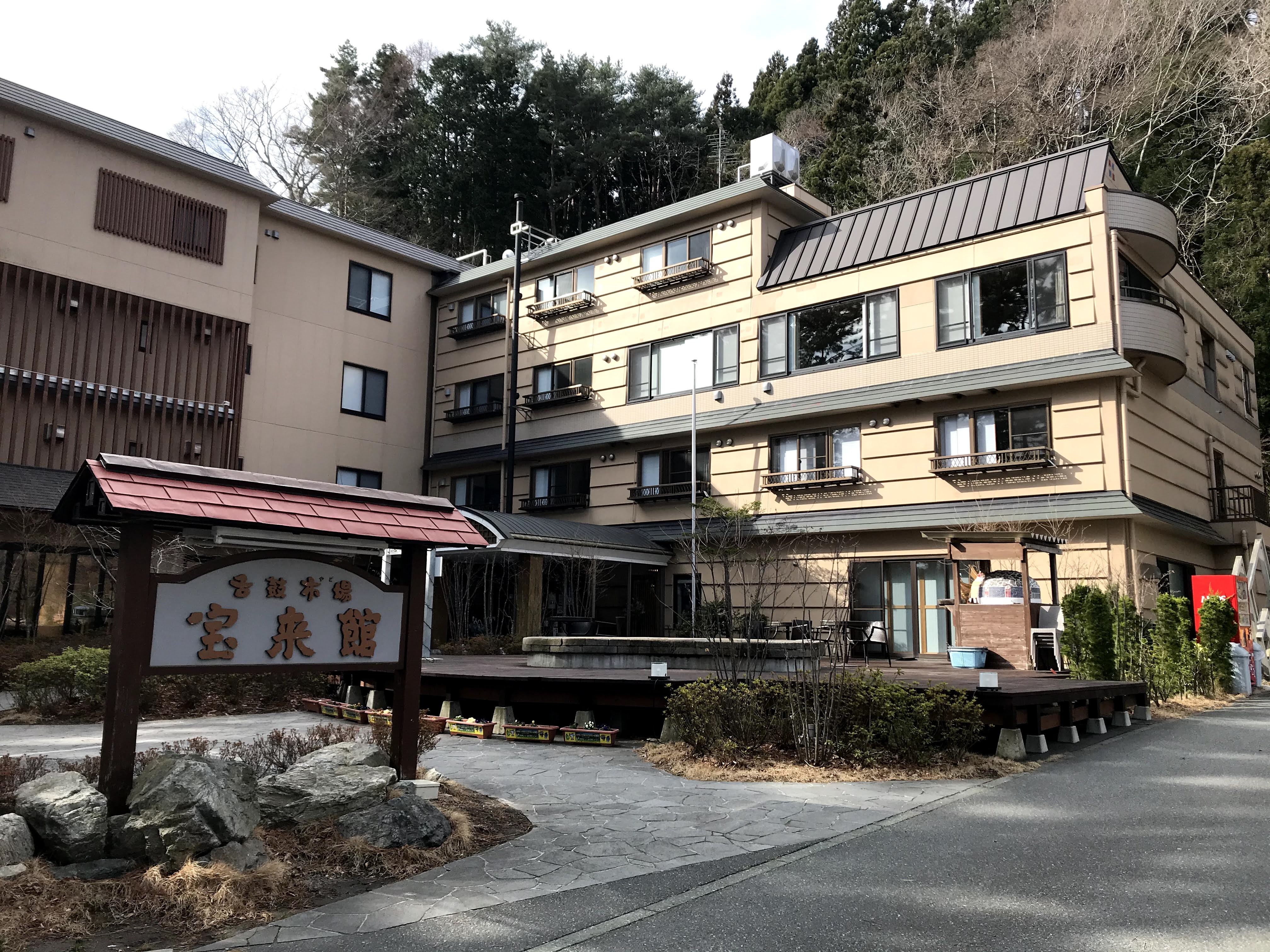
The ryokan was a heirloom from her parents. After the Great Hanshin Earthquake in 1995, Ms. Iwasaki decided to rebuild the ryokan so that it is more earthquake resistant. An evacuation path was also made behind the ryokan for guests and villagers to relocate in the event of a tsunami under the advice of an elderly person. Her decisions saved many lives during the disaster.
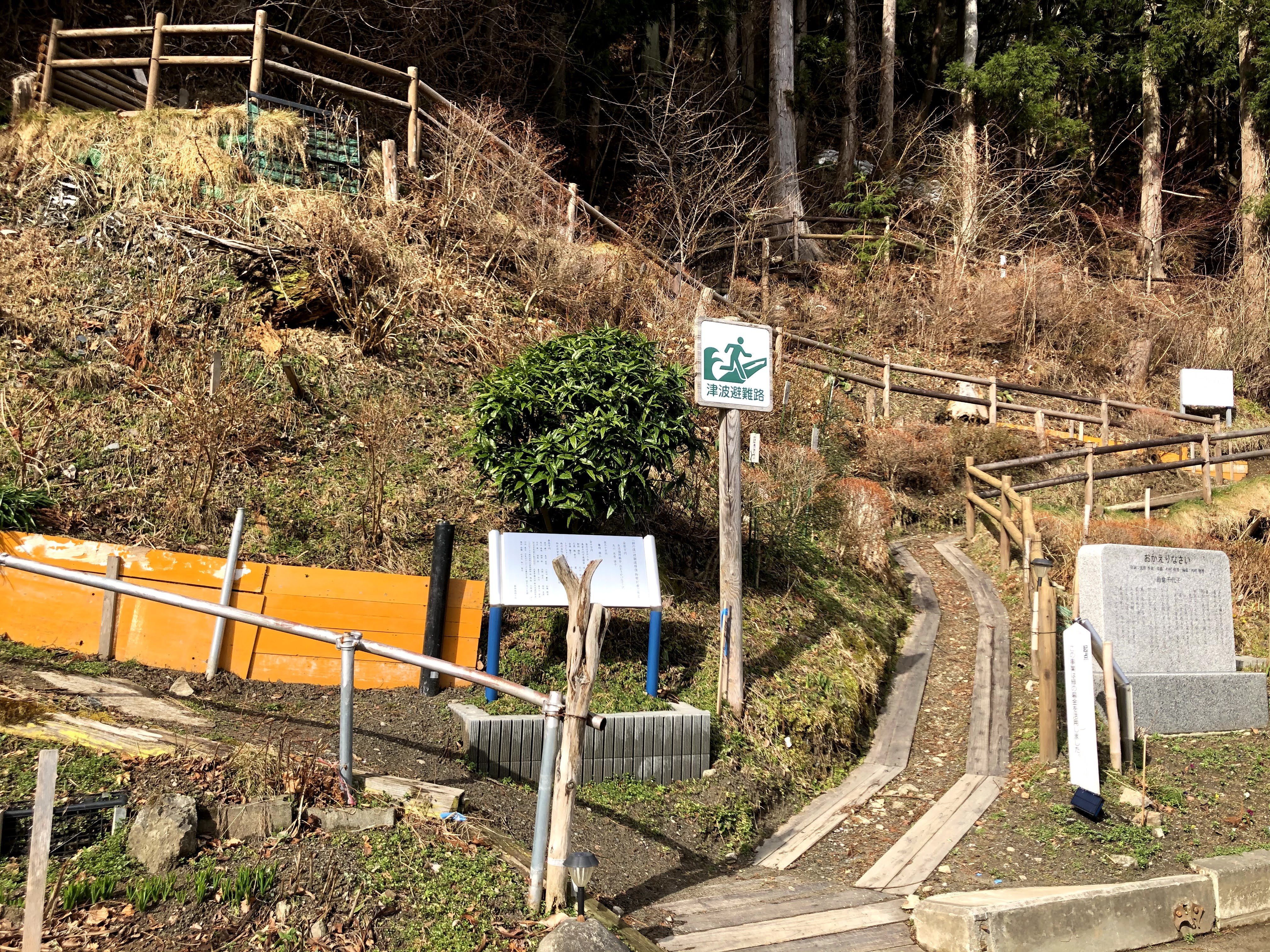
Ms. Iwasaki also understands the importance of disaster education. She is involved in a joint effort with University of the Arts London, where rescue training using Lifeboat in a Box designed in the United Kingdom is being held every year (it was done online due to travel restrictions in 2020). “In our village, besides teaching how to save ourselves, we also teach people to be capable of rescue others,” said Ms. Iwasaki while she was explaining how Kamaishi is the only village doing British style rescue training in Japan.
10 years since the disaster, Ms. Motoda and Ms. Iwasaki have worked their best to educate people about the disaster. Their efforts connect young generations to their past experiences, hoping that generations to come may have a brighter future in their hometowns.
Sports gives strength and happiness
Rugby has a long history in Kamaishi City of Iwate Prefecture, beginning from 1959 when Nippon Steel Kamaishi (now Kamaishi Seawaves) was formed. The area suffered great loss during the tsunami. Although it does not have many facilities like other big cities, it was selected as one of the venues for Rugby World Cup in 2019. Kamaishi is the only post-disaster city among the 12 venues of Rugby World Cup.

Sakuraba Yoshihiko is the general manager of Kamaishi Seawaves who was also a professional rugby player himself. He was also the captain of the Japan national team. According to him, Kamaishi is strongly associated with rugby due to 3 reasons: the strength and charm of the sport itself, the passionate local players, and the spirit of never giving up. When Nippon Steel Kamaishi was renamed into Kamaishi Seawaves, the association between the sports and the town became even stronger. He explained to us about the situation during the disaster and the significance of Kamaishi being one of the host cities for the Rugby World Cup.
When the disaster happened, the clubhouse became a temporary shelter for the refugees, including international players. “There was no electricity, so we helped to move the elderly between floor because the elevator wasn’t moving,” Mr. Sakuraba explained how rugby players were involved in disaster relief activities during the earthquake. It was the moment where rugby and disaster restoration started to become related. “At that moment, rugby and the local community became even more connected,” said Mr. Sakuraba.
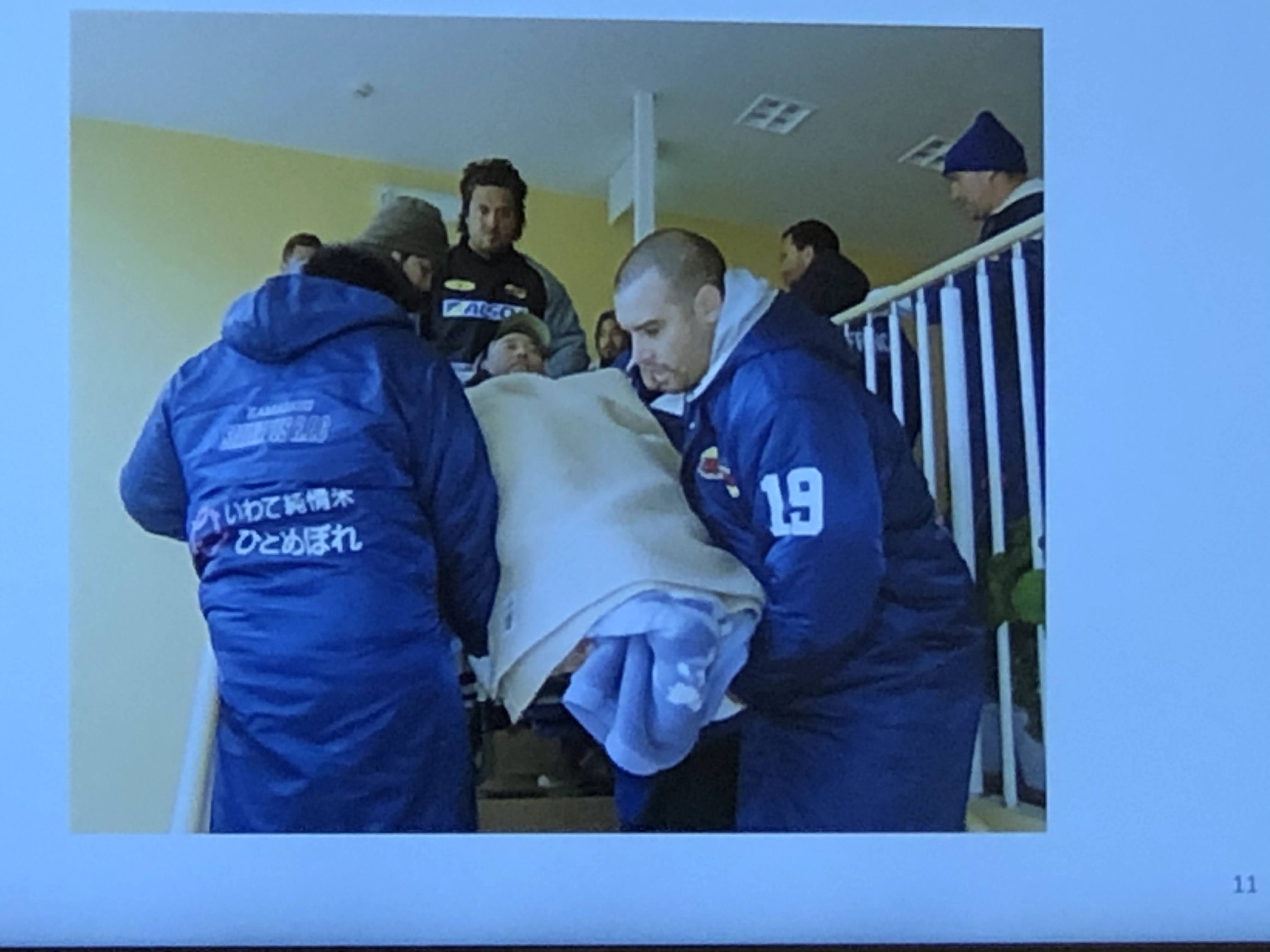
“Since I have seen the damage done by the disaster with my own eyes, I thought restoration of the town should be prioritized instead of the Rugby World Cup. When there were discussions about bidding for it, I thought it was impossible at first,” said Mr. Sakuraba, “as someone who experienced 3 Rugby World Cups, I know how much work had to be done to hold such an event [...] However, realizing that people around me who had lost their home and families wished for some kind of hope and goal changed my mind.”
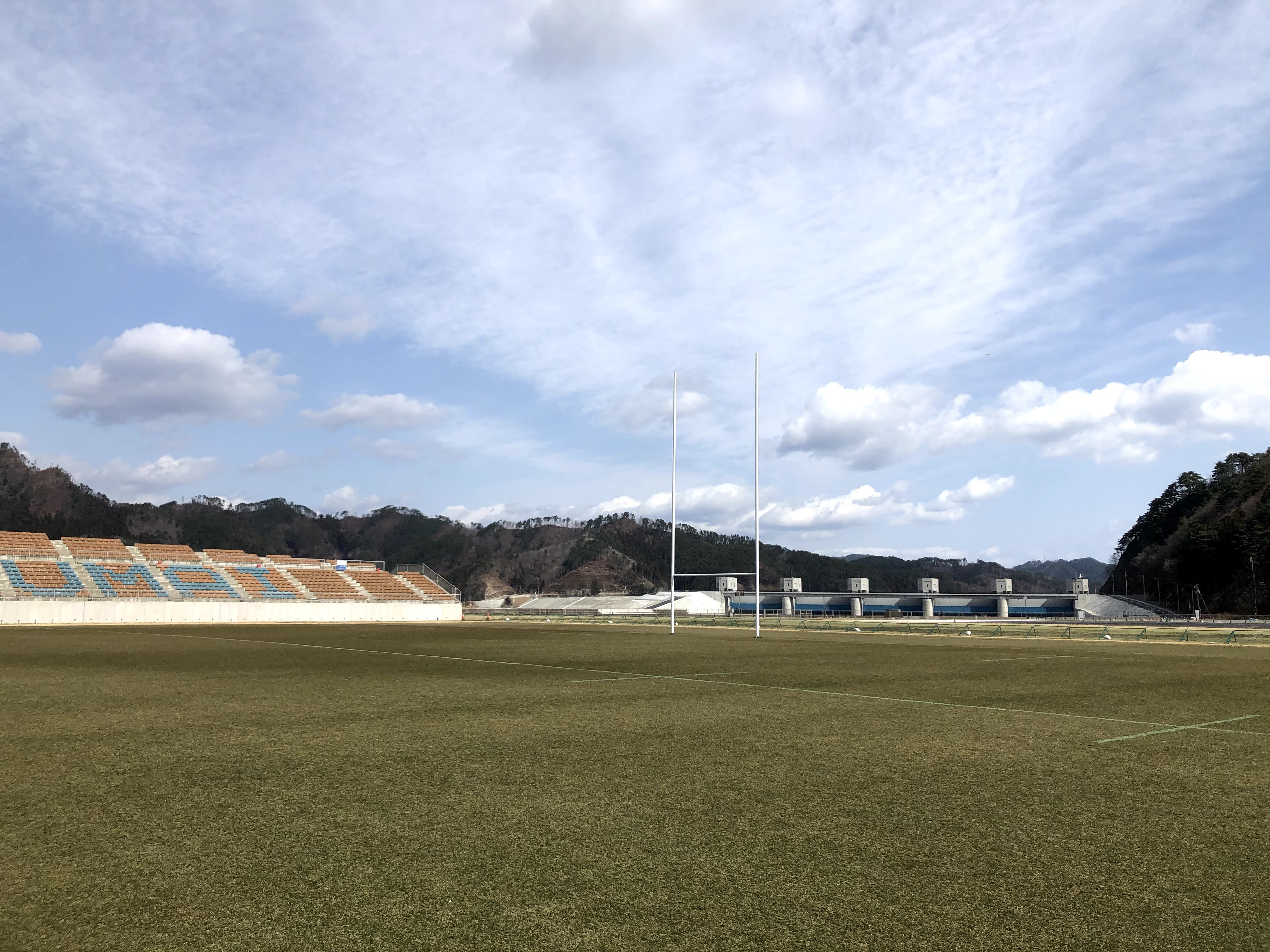
The Kamaishi Recovery Memorial Stadium which was built for the Rugby World Cup meant a lot for the residents. The stadium is unique as it is surrounded by natural landscape, having an obstructed view of the townscape from the higher seats of the stadium. Having seen the effort put in by the local residents, Mr. Sakuraba thought that the construction of the stadium and organizing the World Cup was the right choice. Although there were a lot of obstacles during the preparation for the World Cup, seeing the smile of children on the day of the event, Mr. Sakuraba felt that all the hard work was worth it. The success of Rugby World Cup by such a small underdeveloped town gave them a lot of motivation.
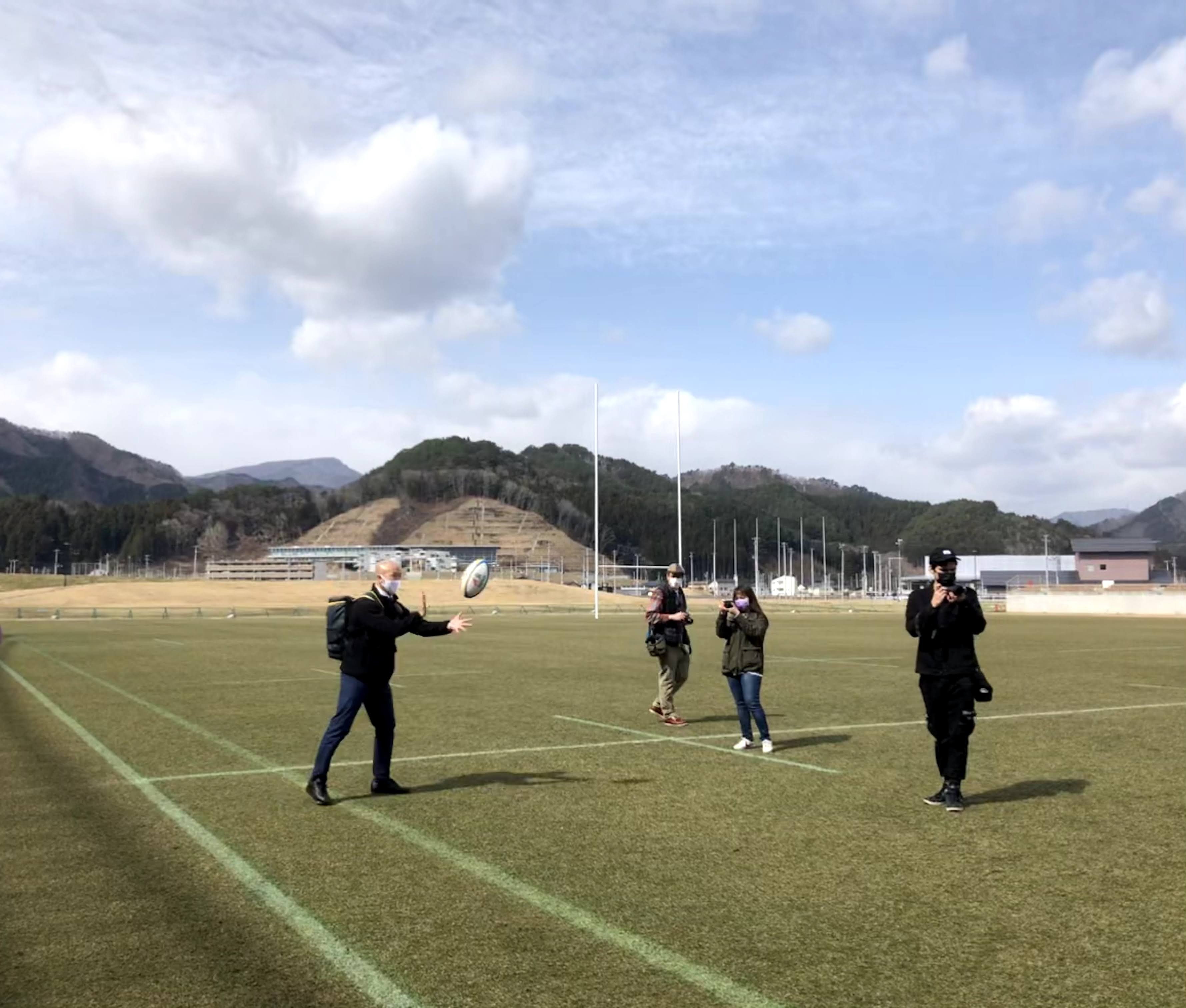
Although 10 years have passed, there is still much work to do until the post disaster areas in Tohoku are restored. Just like Ms. Motoda, Ms. Iwasaki and Mr. Sakuraba, many people are involved in various projects to restore and build a better place for future generations. Restoration is not just developing the areas’ economy, but also to strengthen bonds in the local community and more importantly, the recovery of the victims’ heart and soul. Hope you will support their efforts as well!
Related Articles:
~10 Years After Tohoku Tsunami Disaster~ Vol.1
~10 Years After Tohoku Tsunami Disaster~ Vol.2
~10 Years After Tohoku Tsunami Disaster~ Vol.3
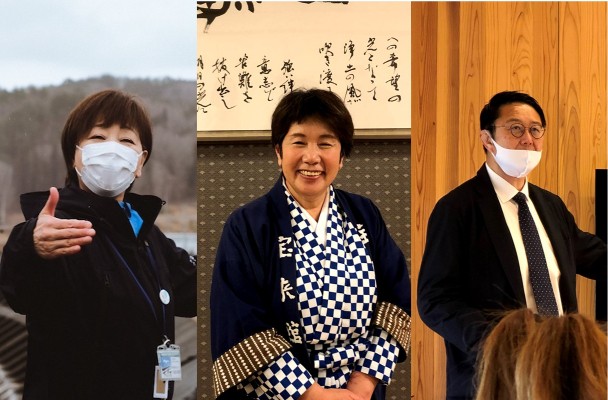
Comments